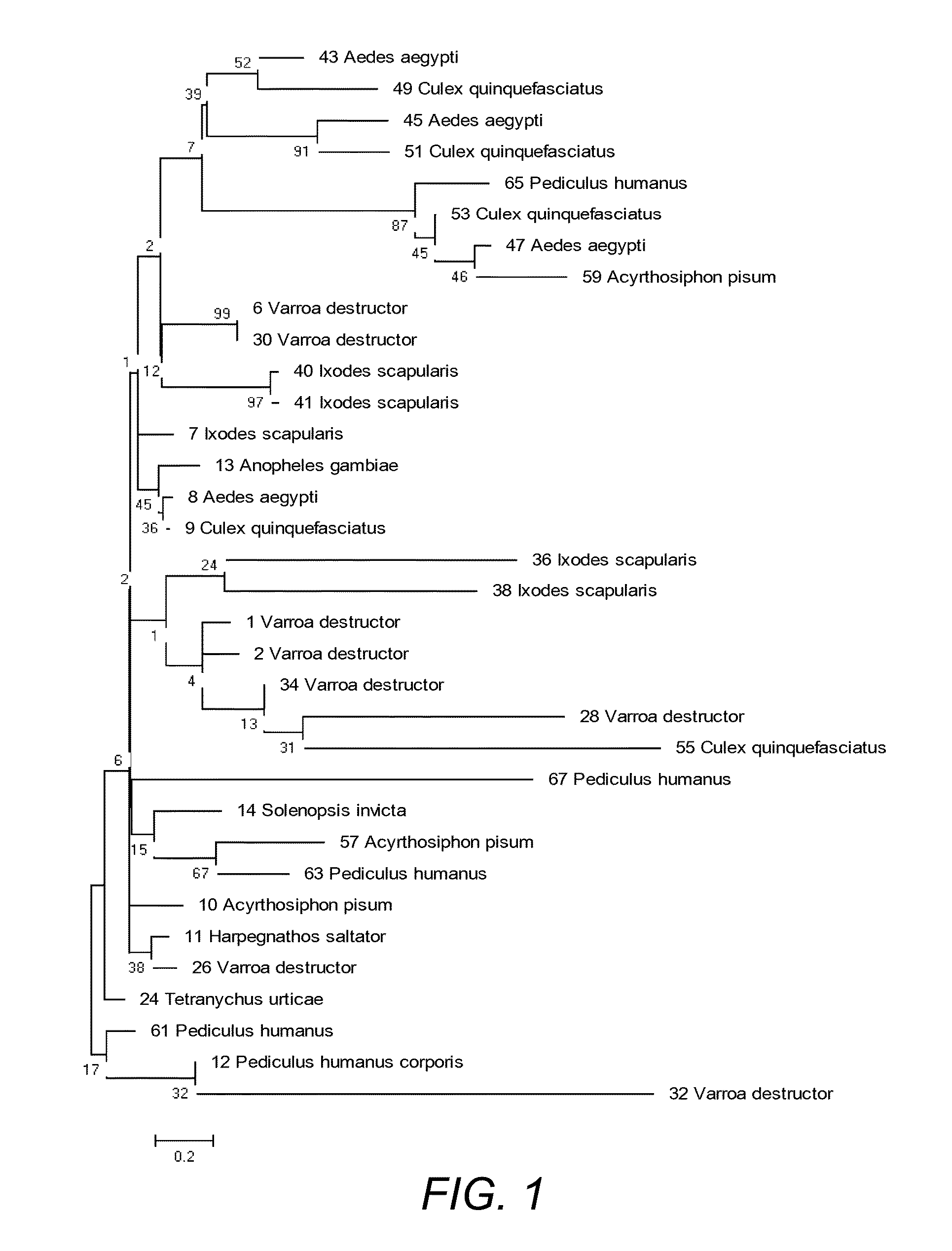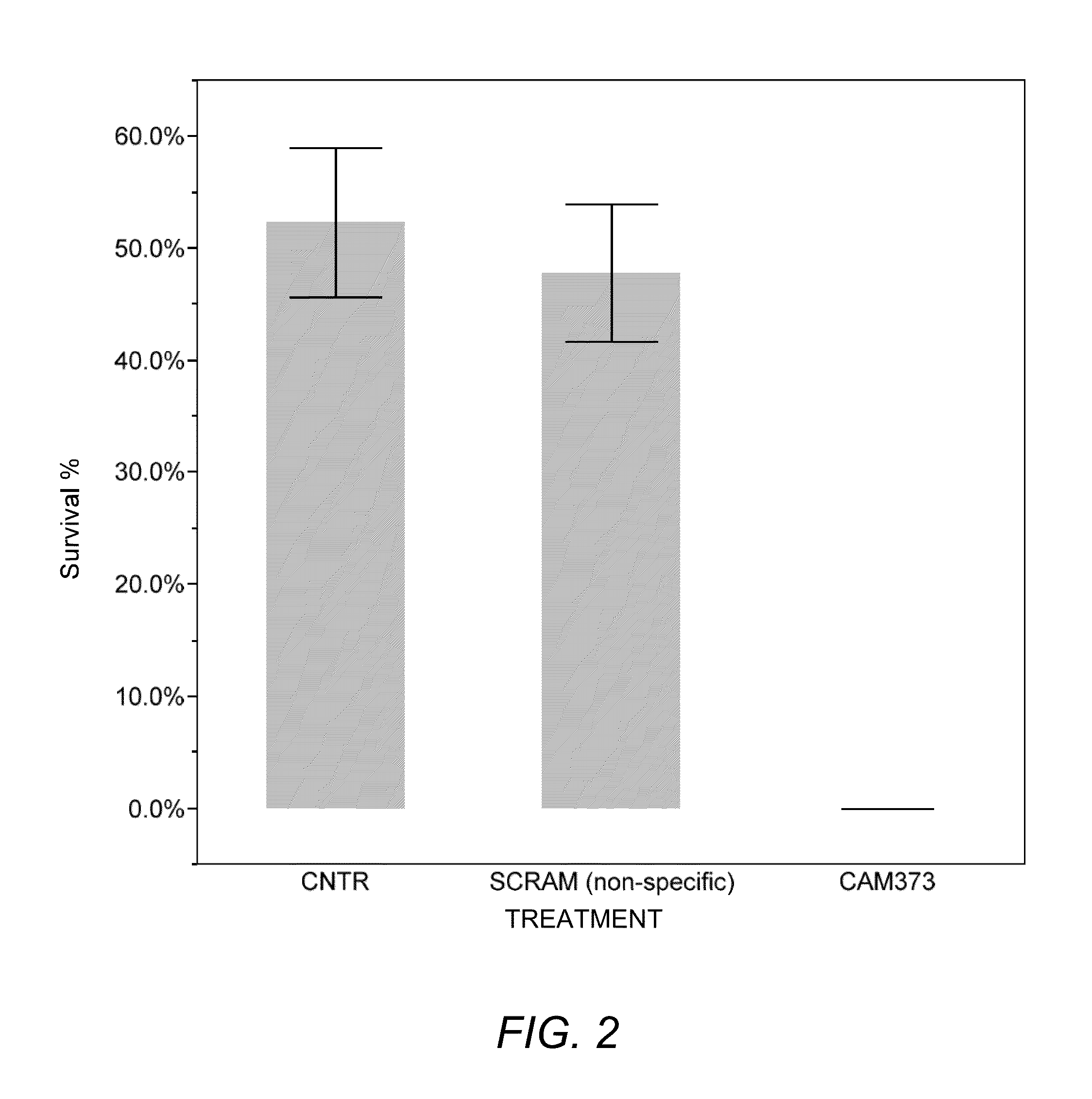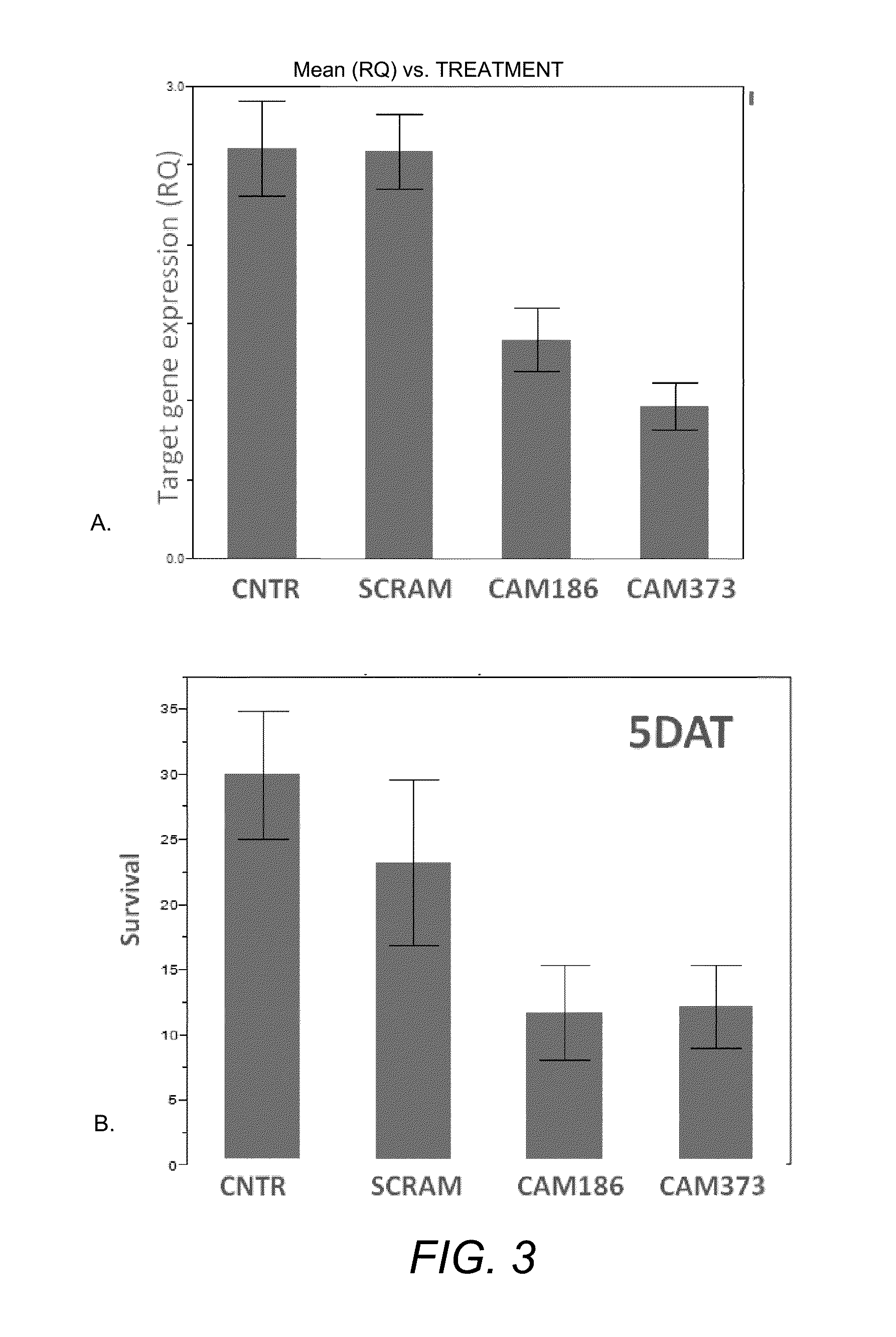Compositions and Methods for Controlling Arthropod Parasite and Pest Infestations
- Summary
- Abstract
- Description
- Claims
- Application Information
AI Technical Summary
Benefits of technology
Problems solved by technology
Method used
Image
Examples
example 1
Varroa Mite Calmodulin Gene Sequences
[0162]The Calmodulin (CAM) genes provided in Table 1 (SEQ ID NO: 1 and 2), or their corresponding transcripts, were used as targets of polynucleotide compositions comprising a polynucleotide that is at least 18 contiguous nucleotides identical or complementary to those genes or transcripts. The gene sequences provided in Table 1, protein sequences encoded by those genes, or sequences contained within those genes were used to obtain orthologous Calmodulin (CAM) genes from other arthropod pest and parasitic species not listed in Table 1. Such orthologous genes and their transcripts can then serve as targets of polynucleotides provided herein or as a source of anti-parasitic, anti-pest or insecticidal polynucleotides that are specifically designed to target the orthologous genes or transcripts.
TABLE 1Target Calmodulin (CAM) genes of Varroa destructorGene nameSEQ IDOpen reading frame DNA sequenceCAM-11ATGGCTGATCAGCTAACTGAGGAACAGATCGCCGAGTTCAAAGAGGCGT...
example 2
Suppression of Calmodulin (CAM) Genes of Varroa destructor
[0164]Polynucleotides for the suppression of expression of Calmodulin (CAM) genes in Varroa destructor mite corresponding to SEQ ID NOs: 3 and 4 (Table 2) are provided and were used to used to suppress expression of Calmodulin (CAM) genes in Varroa destructor mite. The SEQ ID NOs: 3 and 4 describe a 373 bp dsRNA polynucleotide sequence and a 186 bp dsRNA polynucleotide sequence, respectively, selected from CAM-1 (SEQ ID NO: 1). SEQ ID NO: 3, corresponding to dsRNA polynucleotide CAM_L / CAM373 covers most of the open reading frame of the Calmodulin CAM-1 (SEQ ID NO: 1) gene. SEQ ID NO 4, corresponding to dsRNA polynucleotide CAM_S / CAM186 is a partial fragment of CAM_L / CAM373 (SEQ ID NO: 3) and is also derived from CAM-1 (SEQ ID NO: 1). SEQ ID NO: 5 in Table 2 is a control dsRNA sequence polynucleotide sequence with no more than 19 bp sequence identity to any known Varroa destructor gene.
TABLE 2dsRNAs targeting Varroa destructo...
example 3
Varroa destructor Bioassay at 3 Day Post-Treatment with Specific dsRNAs
[0165]Adult female mites were collected from honeybee colonies and placed in a petri dish plate on top of an artificial diet solution containing a mixture of 1% tryptone, 0.5% yeast extract, 1% NaCl and 15 mg / mL agar. In this example the diet was supplemented with 50 μg kanamycin per 1 mL of diet solution. The diet / agar solution was further supplemented with 200-500 μg / mL of dsRNA and the resulting solution was poured on a petri dish. The dsRNA in this example consisted of either SEQ ID NO: 3 (CAM_L / CAM373) or SEQ ID NO: 5 (SCRAM). Fifteen mites were applied to each plate and the experiment was conducted in triplicate. The diet plates with the mites were incubated at 29° C. with 50-60% relative humidity. At specific time intervals the plates were inspected and dead mites were counted and removed. For mortality studies the mites were counted three days after being placed on the diet (FIG. 2). FIG. 2 shows that all...
PUM
| Property | Measurement | Unit |
|---|---|---|
| Fraction | aaaaa | aaaaa |
| Fraction | aaaaa | aaaaa |
| Fraction | aaaaa | aaaaa |
Abstract
Description
Claims
Application Information
 Login to View More
Login to View More - R&D
- Intellectual Property
- Life Sciences
- Materials
- Tech Scout
- Unparalleled Data Quality
- Higher Quality Content
- 60% Fewer Hallucinations
Browse by: Latest US Patents, China's latest patents, Technical Efficacy Thesaurus, Application Domain, Technology Topic, Popular Technical Reports.
© 2025 PatSnap. All rights reserved.Legal|Privacy policy|Modern Slavery Act Transparency Statement|Sitemap|About US| Contact US: help@patsnap.com



